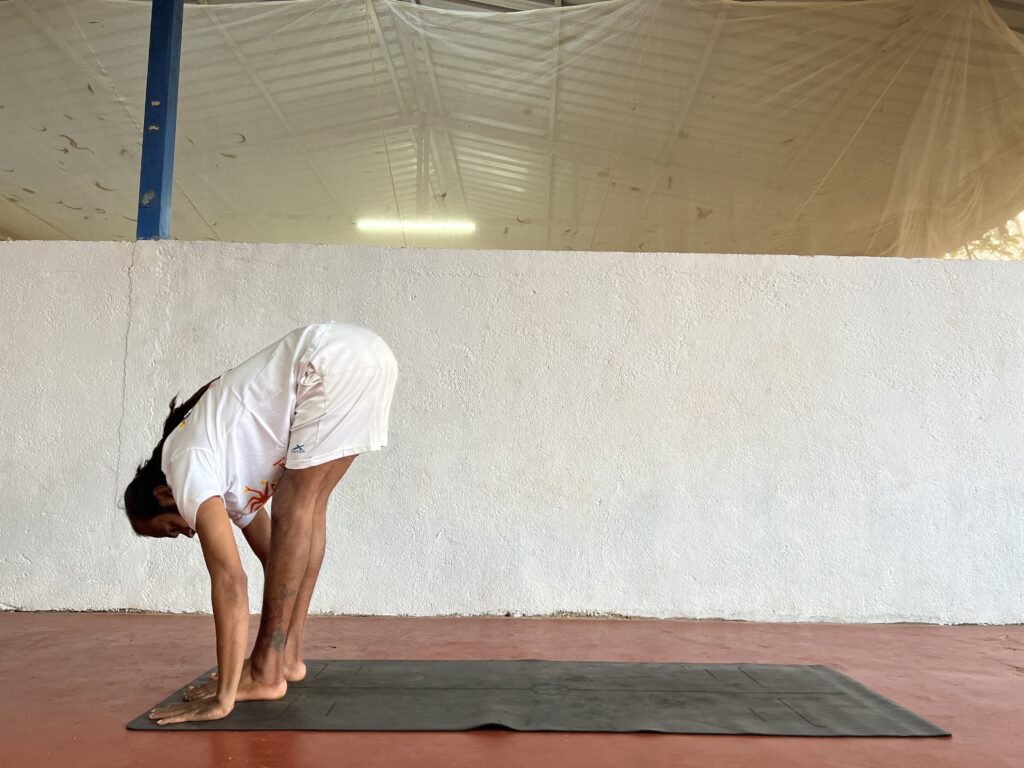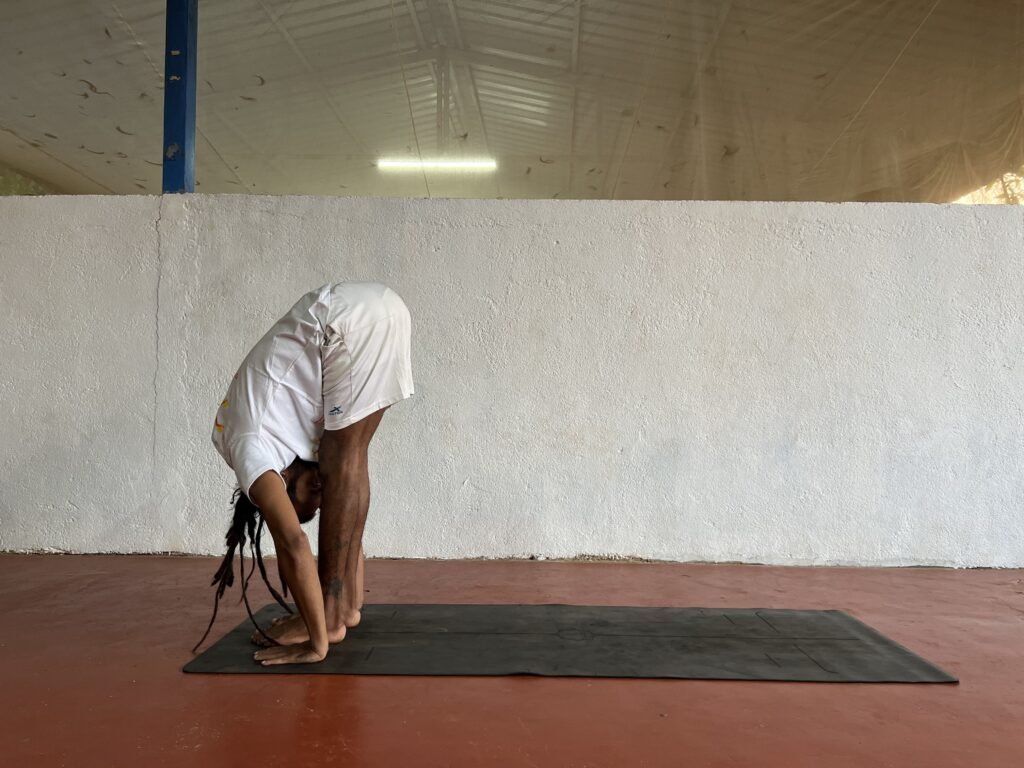
In Sanskrit, “Supta Padangusthasana” means “posture,” where “asana” means “posture” and “supta” means “supine or recline.”
Reclining Big Toe Pose is named as such because the raised leg is supported at the big toes by the same side’s hand, which should be parallel to the floor in this exercise.
Supta Padangusthasana is a fantastic pose for strengthening the abdominal muscles, circulating new blood to the hips, and enhancing flexibility in the lower back and hips.
STEPS FOR SUPTA PADANGUSTHASANA (RECLINING BIG TOE POSE):
- Lay backward with your hands by your sides and your legs extended on the ground. Take a deep breath and lift your left leg until it is parallel to the ground.
- Raise your left arm, and with your thumb, index, and middle fingers, grab your left big toe. Keep your right hand on your right thigh and your right leg straight on the floor. Take 3 to 4 deep breaths.
- Raise the head and trunk off the ground with an exhalation. While keeping the knee straight, flex the left elbow to pull the leg toward the head.
- Bring the head and trunk towards the leg simultaneously, so the chin rests on the left knee. The pose should be held for about 20 seconds while breathing normally.
- Take a deep breath, squat to the floor, and straighten your left leg.
- Repeat the previous steps while changing the position of the left arm and leg. Bring the left leg to the floor.

Benefits of Supta Padangusthasana
A. Knowledge of human anatomy
-
- Enhancing the Reproductive System:
In Supta Padangusthasana, raising one leg while keeping the other stretched out on the floor exerts pressure on the lower abdominal muscles and improves blood flow.
The internal organs, particularly the human reproductive organs, are stimulated due to the pelvic floor muscles contracting, which keeps them healthy and maintains a steady level of hormones in the body.
-
- An essential part of maintaining the health and cleanliness of the rectum and urinary bladder:
Supta Padangusthasana causes the muscles around the tailbone and pelvis to contract and expand due to pressure at the sacrum, the base of the spine, and the tailbone. This pressure improves the function of the rectum and urinary bladder and the fresh blood flow.
B. General Benefits:
- Body awareness:
In Supta Padangusthasana, body awareness becomes crucial, along with breathing, because, while one leg is raised, one must be careful not to overlook the other, which is stretched out completely straight on the floor, tightening the quadriceps. As a result, even with the legs being placed differently, this greatly increases body awareness on both legs. - Strengthens the hamstring and quadricep muscles:
The raised leg tightens the hamstrings, while the stretched-out leg on the floor tightens the quadriceps. These muscles become stronger and more toned as a result of being tightened. - Great for athletes:
Because they have potent hamstrings and quadriceps, athletes can benefit from using this pose both during exercise and after a competition to completely cool the legs down/ Flow blood towards the hips and thighs, along with the stretching of the nerves around the hamstrings and hips, can help with sciatic pain. This can be accomplished by raising the leg and stretching it. - Therapeutic for blood pressure, infertility, and constipation:
Supta Padangusthasana, when practiced repeatedly, can improve fertility in women by directing blood flow to the pelvic region and treating indigestion-related issues by contracting the lower abdominal muscles. With the pressure on the lower back and the center, it is best to perform this pose while tucking in the stomach and tightening the abdominal muscles, which makes them firmer. - Great stretch for the arms and shoulders:
Holding the stretched leg’s big toe at a 90-degree angle while extending the arms outwards stretches the arms and shoulders deeply, strengthening them as a result. - Flexes the legs for advanced poses:
When properly executed, a deep stretch felt at the inner thighs and hamstrings opens the muscles, making them flexible and putting the legs in position for advanced poses. Leg muscles become more flexible and powerful due to increased blood flow throughout the leg.
CONTRAINDICATIONS FOR SUPTA PADANGUSTHASANA:
-
- Stay away from if you have quadriceps or hamstrings injury:
Due to the deep extension of the hamstrings and quadriceps during the practice of this pose, athletes should primarily avoid it when they have an injury to those muscles.
-
- Weak legs and hips:
The reclining big toe pose, or supta padangusthasana, tests the strength of the legs and the hips. As a result, if one generally has weak legs and hips, it is best to perform this pose with assistance or under the instruction of a qualified yoga instructor.
Taking the pose slowly is also preferable.
-
- Injury to the shoulders:
Although this pose is still supine and relieves pressure on the entire back, the shoulders are stretched to hold the big toe with your hand. As a result, any discomfort in the shoulders will worsen due to this deep stretch.
